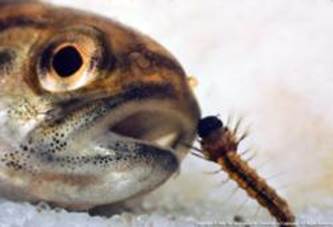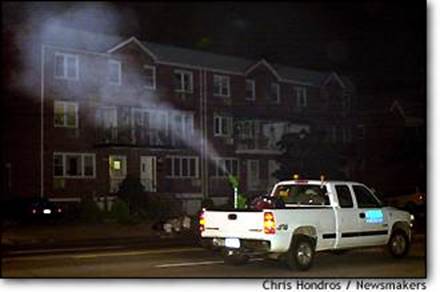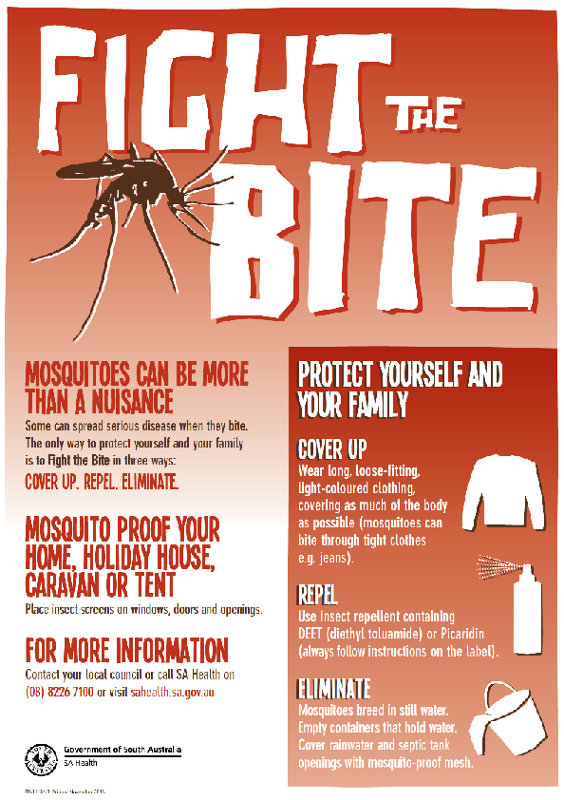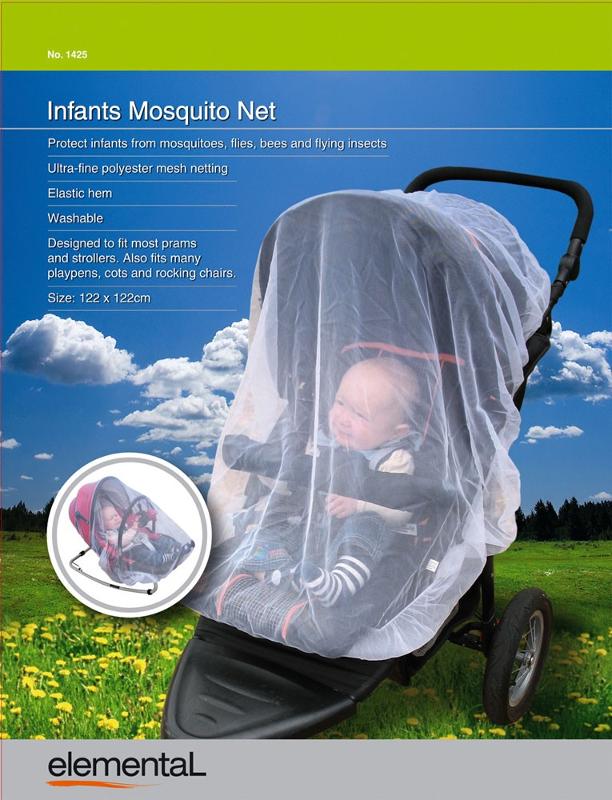Program Options on time of implementation: Proactive vs. Reactive Measures
RK: How would a public health practioner determine which control option (reactive vs proactive) is better?
Control measures can be implemented proactively or as a reaction to confirmed cases of disease.
Proactive control involves prevention strategies and has been shown to be more effective than reactive methods.
Reactive control involves intervening during or after mosquito season has already started and there are already confirmed cases.
· Proactive example: Integrated Pest management
· Reactive examples: Passive case surveillance followed by adulticide application
Types of Control Methods and Interventions
Interventions and Surveillance Strategies
Integrated Pest Management involves monitoring pest populations while preventative measures are in place, followed by the use of control measures when pest populations or environmental conditions exceed pre-set thresholds. Control methods usually consist of environmentally sensitive measures that rely on interruption of pest life cycles and their environmental interactions. This method of management typically involves a combination of the following measures: source reduction and surveillance programs. Source Reduction Efforts eliminate larval habitats or render them uninhabitable. These efforts are a joint effort between the state, towns, and individuals to eliminate any possible habitats for mosquito larvae. Surveillance programs track disease harbored by wild birds & sentinel chicken flocks, adult and larval mosquitoes, or biting counts. Such programs can follow-up on public complaints or reports by the public. Seasonal records are recorded and published.
Interventions occur at the state, local, and individual level. The following text highlights the main methods used at each level.
State level Interventions
There are several different types of intervention strategies against WNV and EEE at the state level.
The first type includes biological control methods. These methods are environmentally safe ways of reducing or mitigating infected mosquito populations through the use of their natural predators like Mosquito fish (Gambusia affinis and G. holbrooki), predacious mosquitos (Toxorhynchites) or entomopathic fungi (Liginex). For example the Gambusia affinis, as seen in Figure 8, will eat the larvae of mosquitoes.

Figure 9: Figure 9: Gambusia affinis, an example of a biological control, will eat the larvae of mosquitoes. http://ucanr.edu/sites/coast/Mosquito_Fish/
However, a drawback is that these measures can negatively affect ecosystems through indiscriminate killing of other populations like tadpoles, zooplankton, and aquatic insects.
Another action the state can take is to employ Open Marsh Water Management. This program is a method that controls mosquitoes through the excavation of shallow pools and ditches, not connected to tidal channel, in mosquito-breeding areas. This creates pools with a higher water level that results in a habitat for fish and other wildlife that can prey upon mosquito larvae and pupae.
Another intervention by the state can include mosquito traps. These devices use compressed CO2, propane, or octenol to capture adult mosquitos. However, these devices are very expensive and a better strategy would be to target mosquitoes earlier in the life cycle.
|
Fun Fact: High voltage electric insect traps (i.e. Bug Zappers) can also kill mosquitoes. |
A final type of intervention involves the use of pesticides. Pesticides are substances used for killing insects or other organisms harmful to animals or cultivated plants. There are two main types: larvicides and adulticides . As the names suggest, they each attack mosquitoes in a different phase of their life cycles. Larvicides are proactive measures that kill large numbers of immature mosquitoes, which can prevent a large viral outbreak. On the other hand, adulticides target adult mosquitoes and prevent large swarms from emerging. Adulticides can be administered in a large or small droplet forms. The small droplets are more effective at coming into contact with and ultimately killing, mosquitoes. Adulticides consist of large droplets that are more likely to settle on the ground or vegetation rather than contacting mosquitoes. Not only does this method kill fewer mosquitoes, but it can also have undesirable effects on non-targeted organisms.
. As the names suggest, they each attack mosquitoes in a different phase of their life cycles. Larvicides are proactive measures that kill large numbers of immature mosquitoes, which can prevent a large viral outbreak. On the other hand, adulticides target adult mosquitoes and prevent large swarms from emerging. Adulticides can be administered in a large or small droplet forms. The small droplets are more effective at coming into contact with and ultimately killing, mosquitoes. Adulticides consist of large droplets that are more likely to settle on the ground or vegetation rather than contacting mosquitoes. Not only does this method kill fewer mosquitoes, but it can also have undesirable effects on non-targeted organisms.
During seasons with increased presence of WNV and EEE, the state can conduct aerial adulticide sprays throughout high-risk areas (Figure 9). The sprays consist of the chemicals sumithrin and piperonyl butoxide (PBO), which can cause minor health problems for people if necessary precautions are not taken (e.g. staying indoors during application and closing windows). The sprays can also affect non-target insects, leading to widespread adulticide. Therefore, it would be best if the state reserved aerial spraying for emergencies. Although aerial sprays done at a state level can reduce risk, it does not eliminate the viruses and can cause unwanted environmental effects. Additionally, widespread aerial spraying has the risk of conveying a false sense of security to residents.
Timed minimal application rates and delivery mechanisms approved by trained public health professionals can minimize adverse effects of pesticides. It is important that the sprayings of pesticides do not harm non-targeted organisms. Low rates of application can mitigate any hazard to other animals, such as honeybees, ladybug, and butterflies. It is also important that human exposure to pesticides is decreased through night applications and public notification prior to spraying.

Figure 10: Truck spraying town streets with pesticides. The spraying is done at night to reduce direct exposure to residents (http://www.meepi.org/wnv/overkillma.htm)
Interventions at a Local Level:
In order to prevent high exposure from mosquitoes, towns should advise their residents to limit outdoor activities, such as gardening, during high risk times and to take measures to protect themselves. Times when exposures to mosquitoes are highest are during sunrise, sunset, and early evening, especially during the months of July-September. Towns and schools should consider scheduling events indoors when mosquitoes are most active, such as during early evenings and the summer. During an outbreak, towns should intensify the focus on personal prevention methods, such as the use of repellent. Local officials should keep each other and the public informed and up-to-date with the identified cases during the high-risk season.
Towns and residents can also take part in spraying pesticides. One way is through misting systems, which are outdoor residential systems that use nozzles mounted around buildings to spray pesticides. Common pesticides like pyrethrins and permethrin are only active in the environment for a short time period, so human exposure can be reduced by avoidance of misting areas during designated times. However, insufficient data exists to confirm the effects of misting systems on mosquito control.
For additional information on the role of pesticides in integrated mosquito management, see: http://www.ncbi.nlm.nih.gov/pmc/articles/PMC2631680/pdf/11266290.pdf
Interventions on an Individual Level

Figure 11: Quick summary of basic actions that people can take to protect themselves from mosquitoes infected with WNV and EEE
(http://www.roxbydowns.com/breaking-news/mosquito-control)
The best prevention methods against infections from WNV and EEE are simple actions that all individuals can carry out. First, in order to reduce the number of mosquito bites acquired while outside, residents should wear clothing, such as long pants and long sleeves that covers open skin. People should also cover gaps in baby carriages with netting while outside (Figure 12). It would also be prudent for residents to limit time spent outdoors during times when mosquitoes are most active. Finally, people should wear insect repellent while outdoors.

Figure 12: Mosquito net to protect infants while outside.
(http://www.equipoutdoors.co.nz/contents/en-us/d617_mosquito_nets.html)
Repellents are chemicals applied to an individual's clothing or exposed skin to discourage mosquito bites and decrease the likelihood of disease transmission. There are a variety of commercial products that contain effective chemicals for warding off mosquitoes. The four most effective repellent active ingredients are: DEET, Picaridin, IR3535, and oil of lemon eucalyptus. Products containing DEET (N, N-diethyl Metatoluamide) are the most common and have the largest number of hourly protection (~8-12 hours) per application. However, a drawback to DEET is that it is toxic at extremely high levels for freshwater fish and insects. Repellents that include the active ingredient Picaridin are moderately toxic to fish. Finally, repellents containing oil of lemon eucalyptus are not recommended for use on children under the age of three years. While insect repellents are an excellent way to protect oneself from mosquitoes and thus potential disease transmission, exclusive use of repellents is not enough to prevent WNV or EEE transmission.
|
Fun Fact: Despite the existence of dozens of brands, the most common active ingredient in insect repellents is DEET. |
In addition to strategies that protect an individual from mosquito bites, residents can modify personal property to reduce risk of WNV and EEE transmission. The best action that residents can take is to reduce areas of standing water on their property. Mosquitoes lay eggs in standing water and it would drastically decrease the mosquito population to remove areas for larval development. Examples of action to eliminate larval habitats or render them uninhabitable include: emptying and changing water in bird baths, pools, fountains, buckets, gutters, tires etc. once a week to destroy potential habitats; keeping swimming pool water treated. Homeowners can also fill in ditches and holes in trees, which can also become possible habitats for mosquitoes (Figure 13).
In addition to limiting larval habitats, residents can protect themselves by covering gaps in walls, doors, and windows to prevent mosquitoes from entering the house. Residents should also make sure screens in windows and doors are bug-tight. An additional layer of protection is to cover cribs and beds with netting. Replacing outdoor lights with yellow "bug" lights tend to attract fewer mosquitoes as well.



